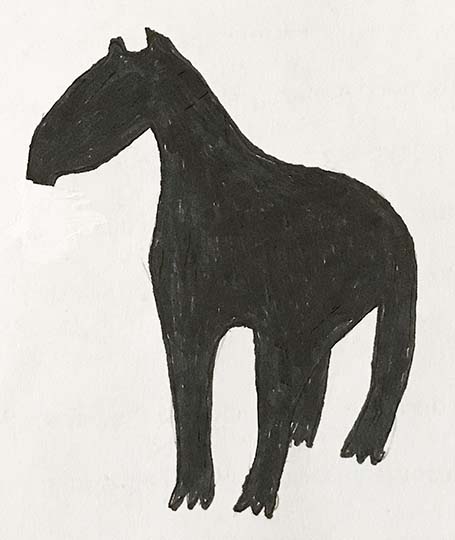Ground sloths are extinct xenarthrans (“zee-nar-thrans”), a major group of land mammals mostly restricted to South and North America. Other xenarthrans are tree sloths, anteaters, armadillos, and the armadillo-like glyptodonts. The first three of these are still extant (living). The living ones have a variable body temperature that is lower than that for other mammals.
The word “xenarthrans” means “stange joints,” in reference to these animals usually having feet with large claws. Some ground sloths had ossicles in their skin.
The biology of ground sloths is well known because some exceptionally well-preserved specimens that have been found in dry caves (in both South and North America still have their hair intact (in some cases reddish) and soft tissues preserved. Samples from these specimens have been most useful for DNA analyses by evolutionary biologists. There is no living animal quite like the ancient ground sloths. They were bipedal browsers of grasses and leaves, and are usually depicted as setting up on their haunches, feeding on the leaves of tall trees.
There were about 60 genera of ground sloths, and these animals ranged in size from cat-size to giants (Megatherium) over 6 m (18 ft.) long and probably 3 tons in weight. This large ground sloth ranged from South and Central America to the southern states of USA. Charles Darwin mentioned in his book “The Voyage of the Beagle,” that he had found Megatherium and other ground-sloth genera in South America.
Plastic model of Megatherium.
A sloth skull showing the peg-like teeth.
The early American politician Thomas Jefferson in 1797 described the Pleistocene ground sloth Megalonyx from West Virginia.This Pleistocene genus has been found also in Alaska and Canada and rarely at Rancho La Brea Tar Pits (in urban Los Angeles of Southern California..
Three types of late Pleistocene ground sloths have been found in the Rancho La Brea Tar Pits. One of these is the “Harlan ground sloth,” traditionally known as Glossotherium harlani. It stood a little over 6 feet tall (1.8 m) and weighed about 3,500 pounds. It lived in both South and North America. In recent years, vertebrate paleontologists have reported that the name Glossotherium harlani is problematic and, therefore, is now known as Paramylodon Harlan (Owen, 1840). Notice that Owen’s name is now in parentheses—which is an official nomenclatural requirement.
The immediately preceding photographs show the exterior and interior, respectively, of the skeleton of Paramylodon harlani from La Brea.
Another ground sloth commonly found at Rancho La Brea Tar Pits is the “Shasta ground sloth,” Nothrotheriops shastense. This sloth was smaller than Paramylodon harlani and had a more elongate mouth, fewer teeth, and was probably a browser that ate leaves. Its skin had none of the ossicles found in Paramylodon harlani.
Side view of the ground sloth Nothrotheriops shastense from Rancho La Brea.
As summarized in the following diagram, ground sloths originated in South America about 34 mya (million years ago) during the the early Oligocene. They migrated, with certainty, into North America near the Pliocene/Pleistocene boundary. This was about 2.7 mya, during the Great American Biotic Interchange (GABI), when the Isthmus of Panama emerged and connected, with certainty, North America with South America (see one of my previous blog posts).
Geologic overview of ground-sloth migration patterns through time. Literature search and drafting by R. L. Squires (2023).
Although there have been a few reports of earlier migrations of rare ground sloths into North America (during the late Miocene time, from 8 to 10 million years ago (mya), these need more study for confirmation.
They are two newly recognized genera:Thiniobadistes and Pliometanastes. Neither one, however, is known from South America. Both are endemic to North America. One genus occurs in Nuevo Leon in northern Mexico and Florida, and the other one occurs in Florida. A possible late Miocene arrival of ground sloths, coincident with the evolution of new genera of sloths, helps establish that South American mammals were moving, for the first time during that time, northward into North America. The exact migration route of this first pulse of northward migration out of South America has not been fully determined. Was it via Central America? Some researchers believe that it might have been via "island hopping" in the West Indies area, stretching north from the chain of Lesser Antilles Islands and then west along the chain of Greater Antilles Islands (including Puerto Rico, Haiti/Dominican Republic, and Cuba), and northward again into Florida. More research is needed to solve this unsettled dilemma.
Ground sloths went extinct approximately 10,000 years ago (we just missed them!). They were most likely hunted to extinction by humans. They lasted somewhat longer in Central America, possibly because of their smaller size there.




















